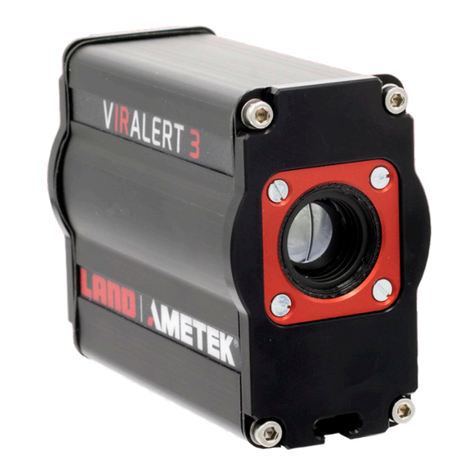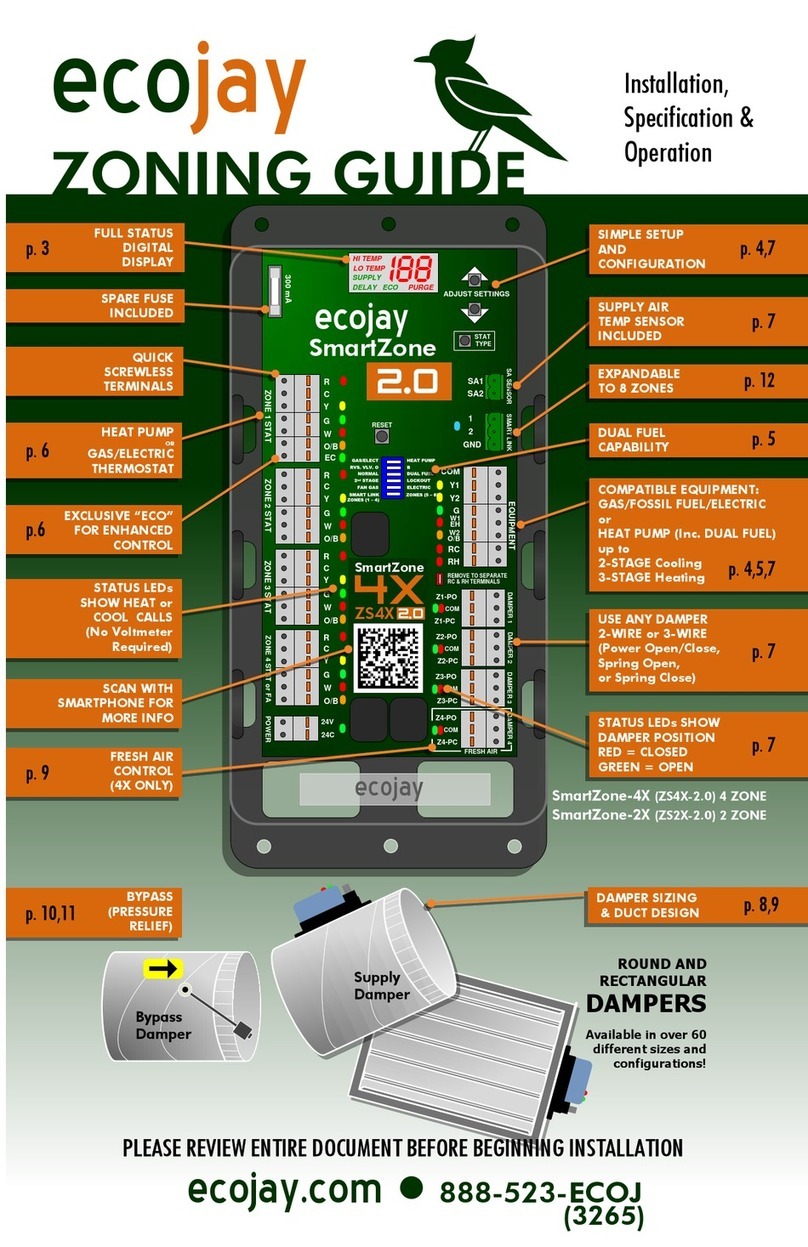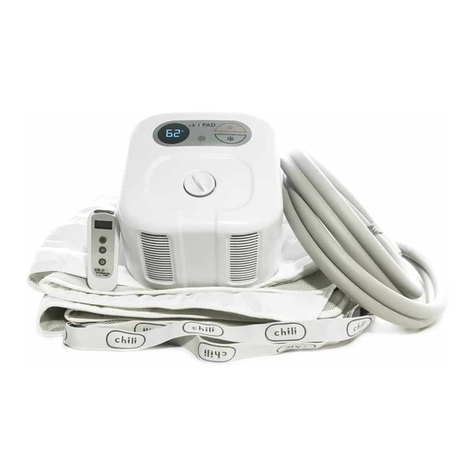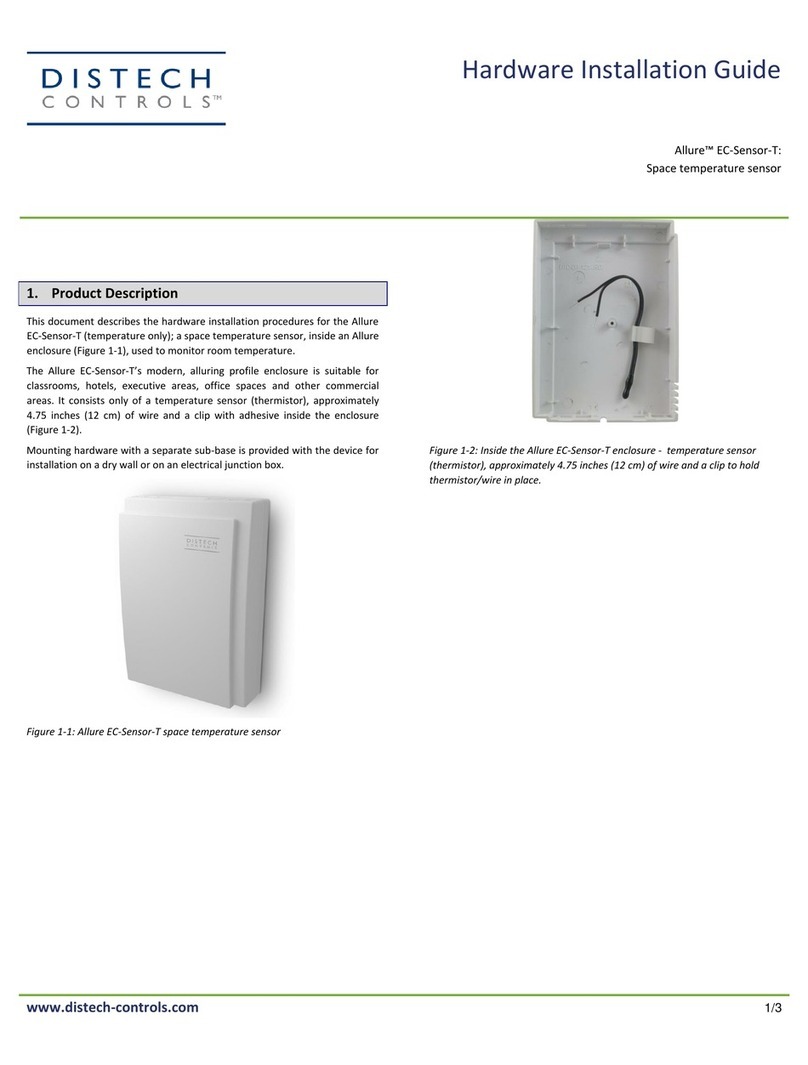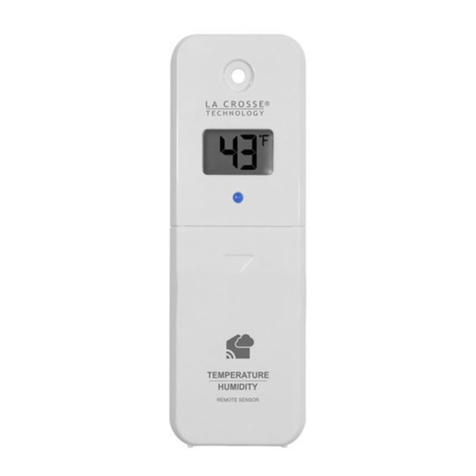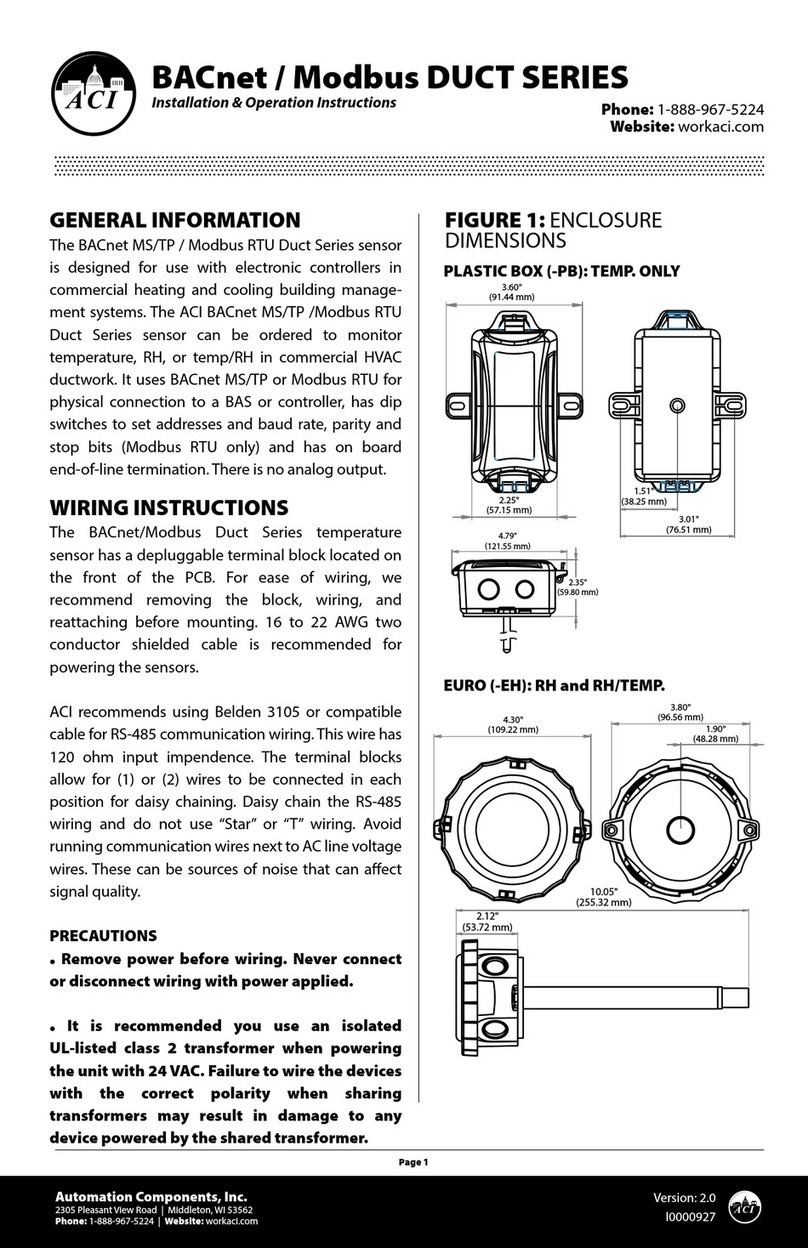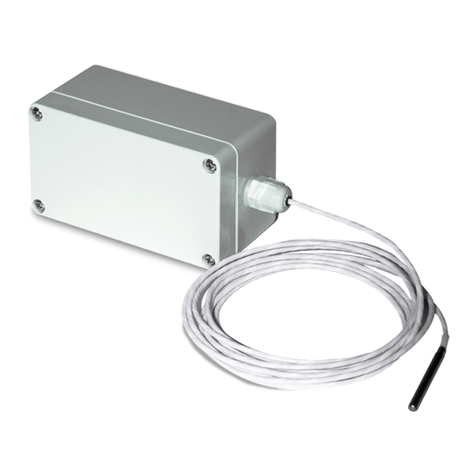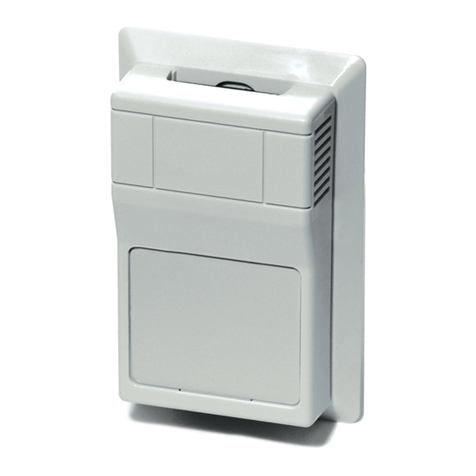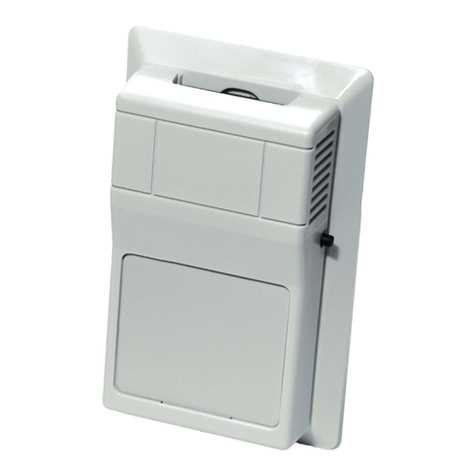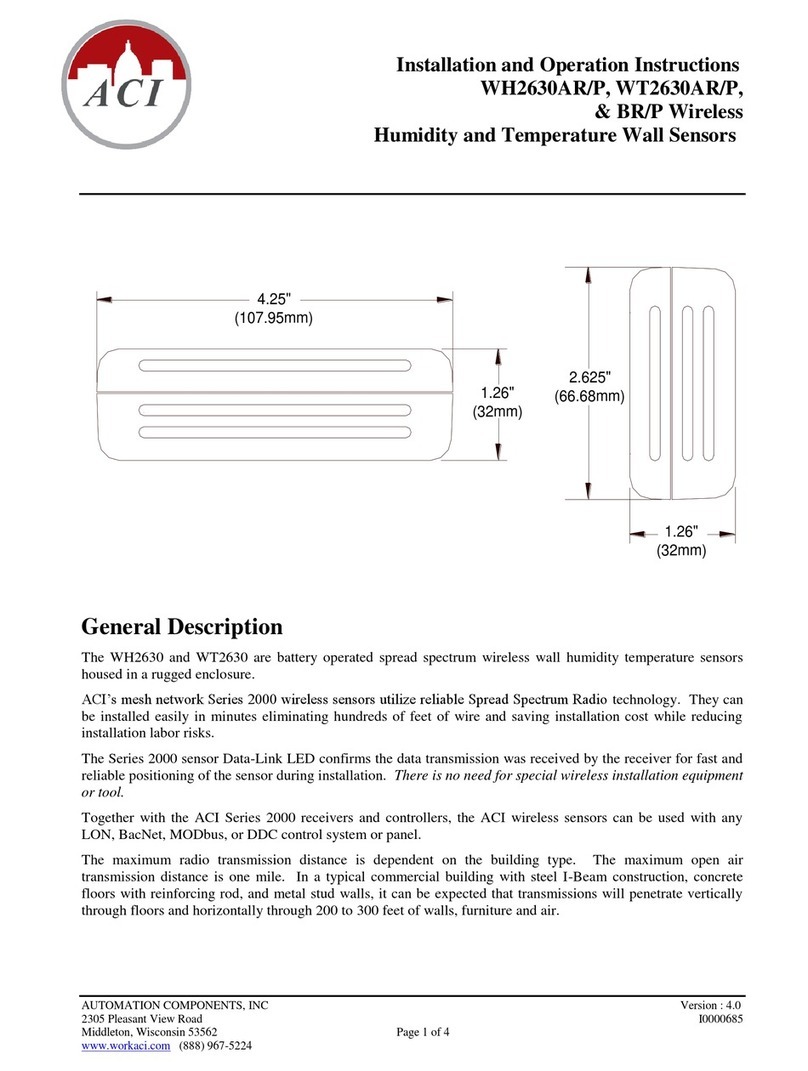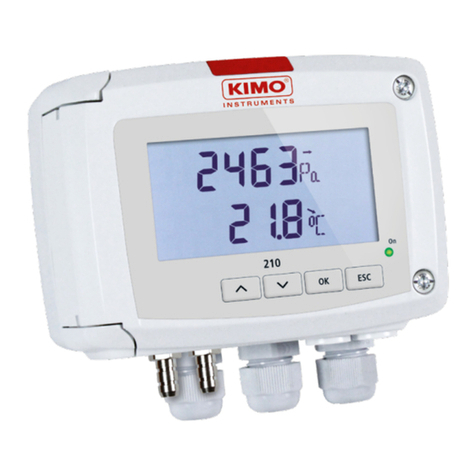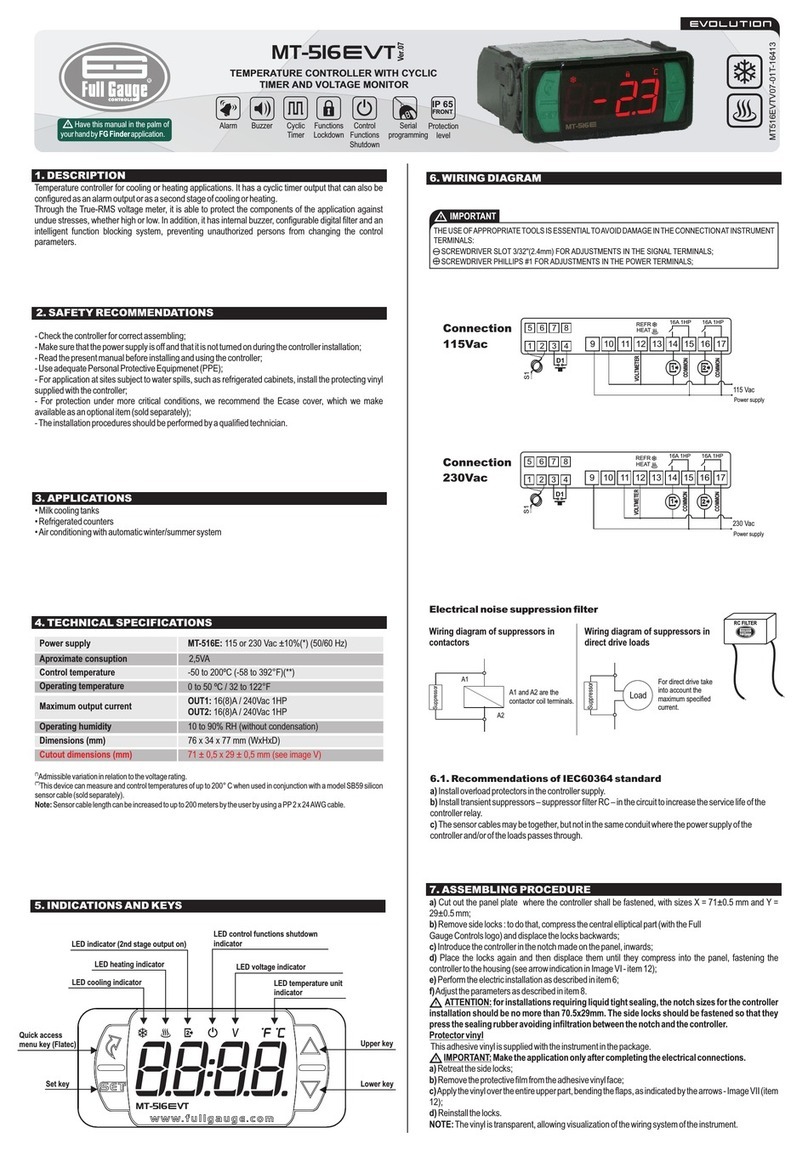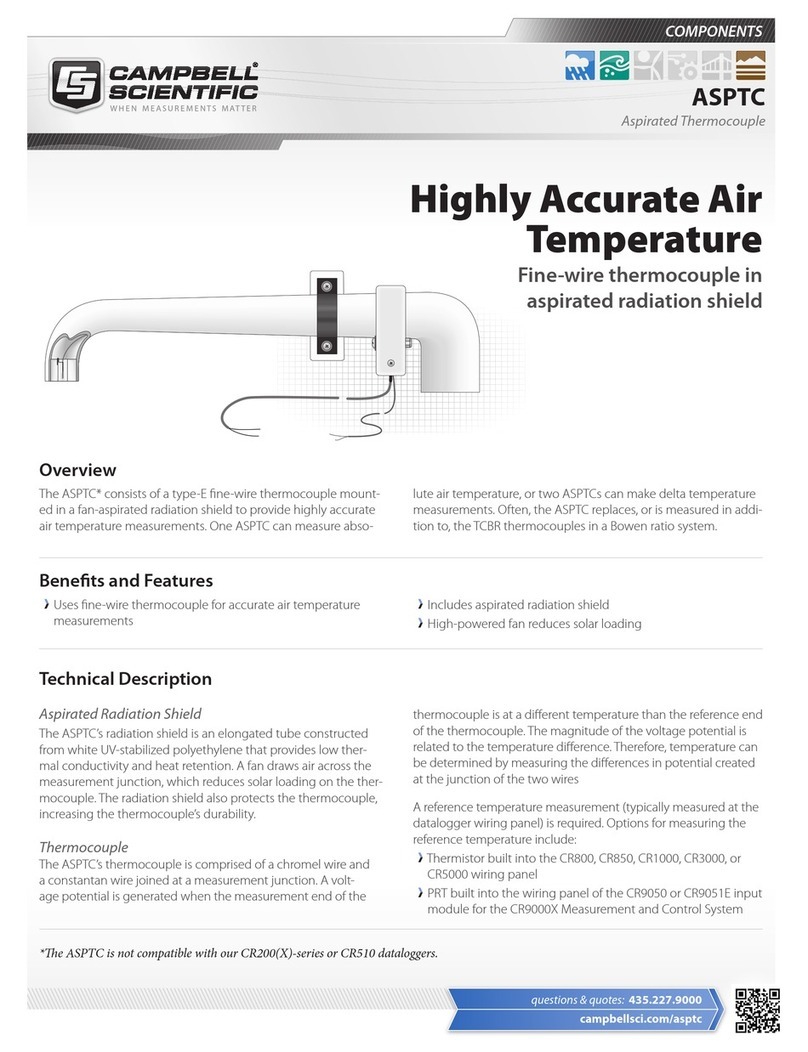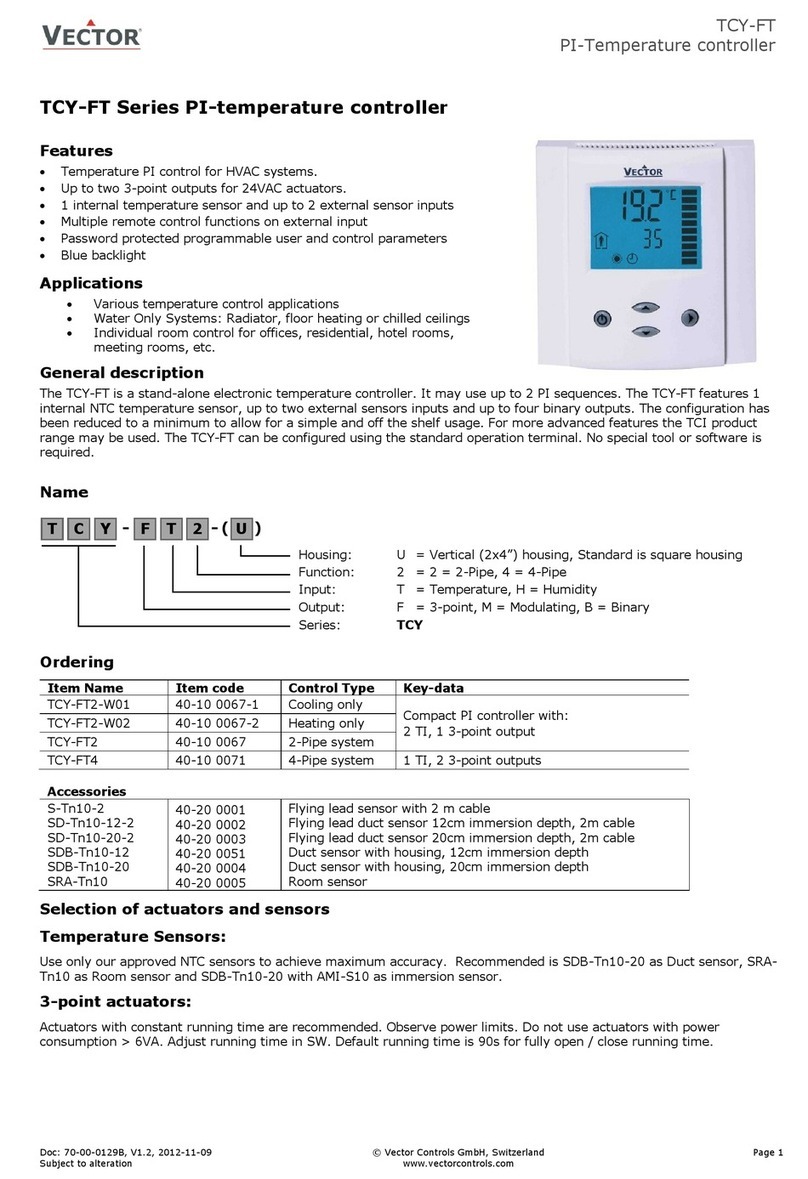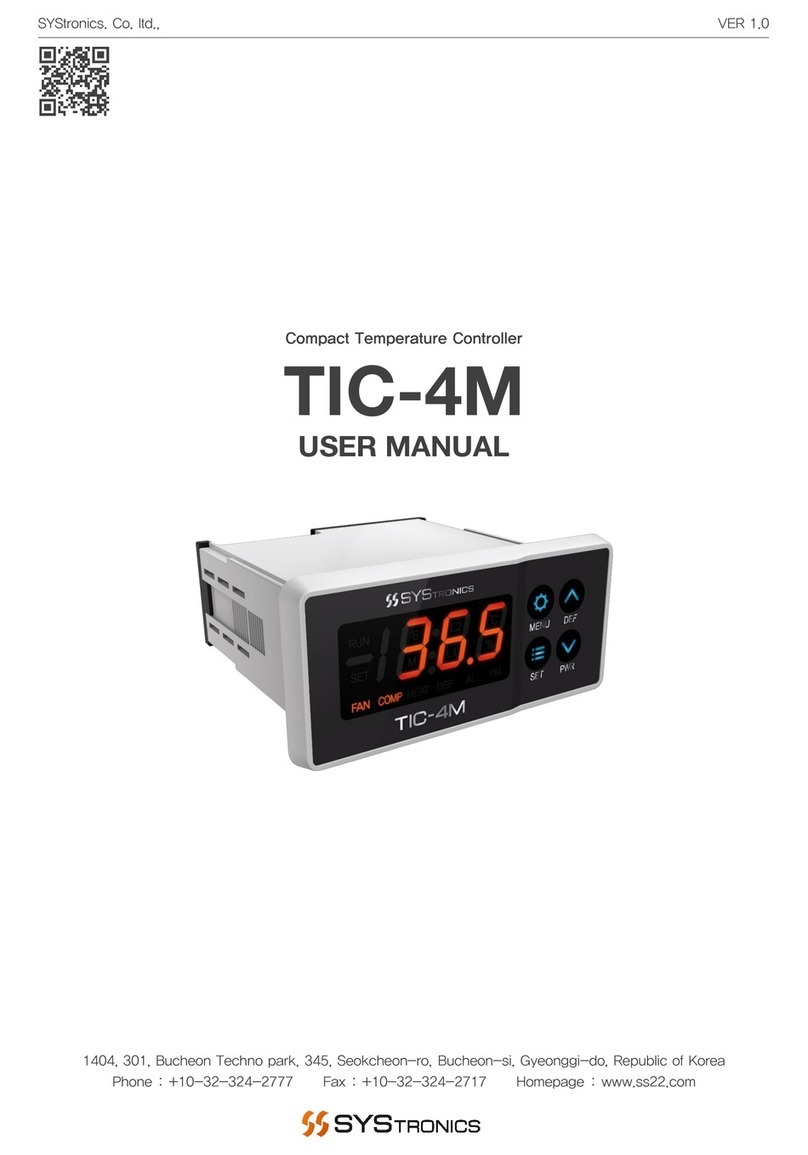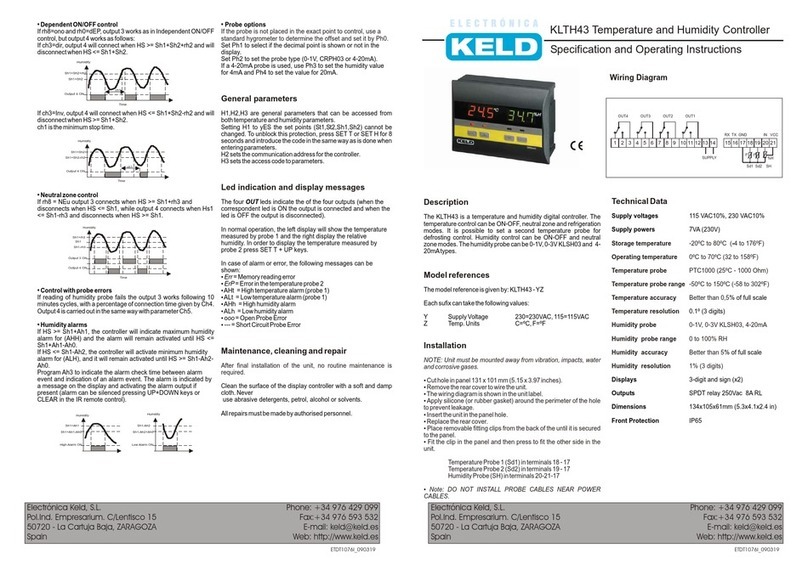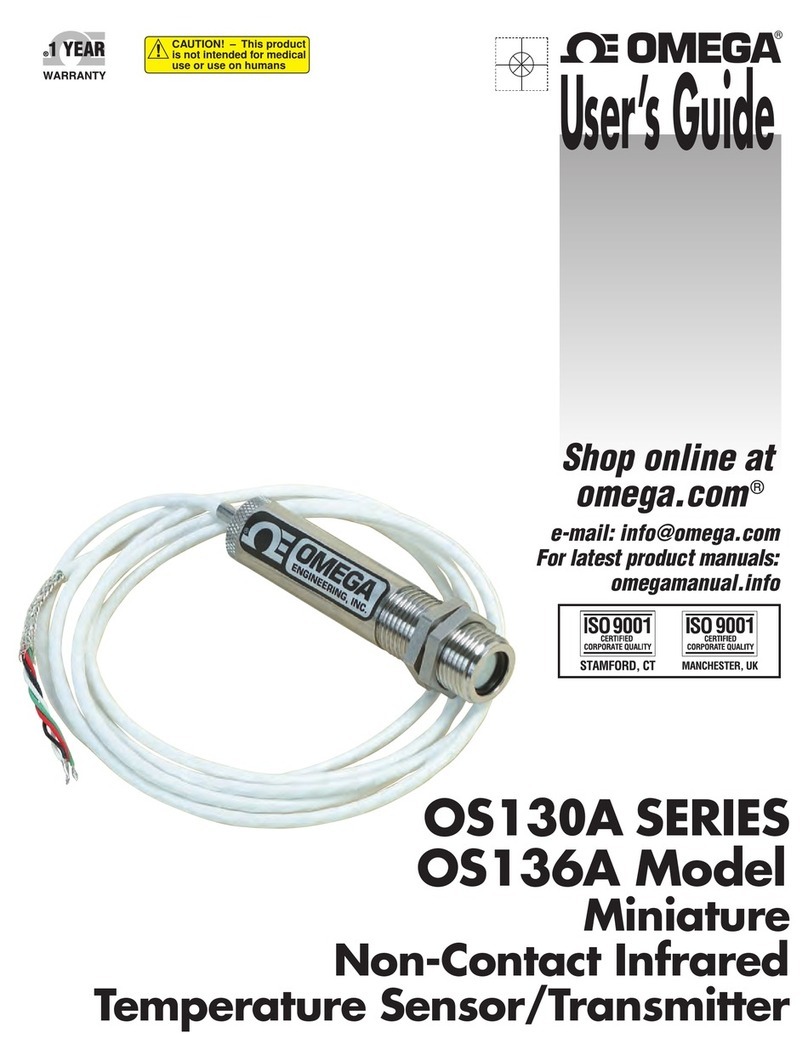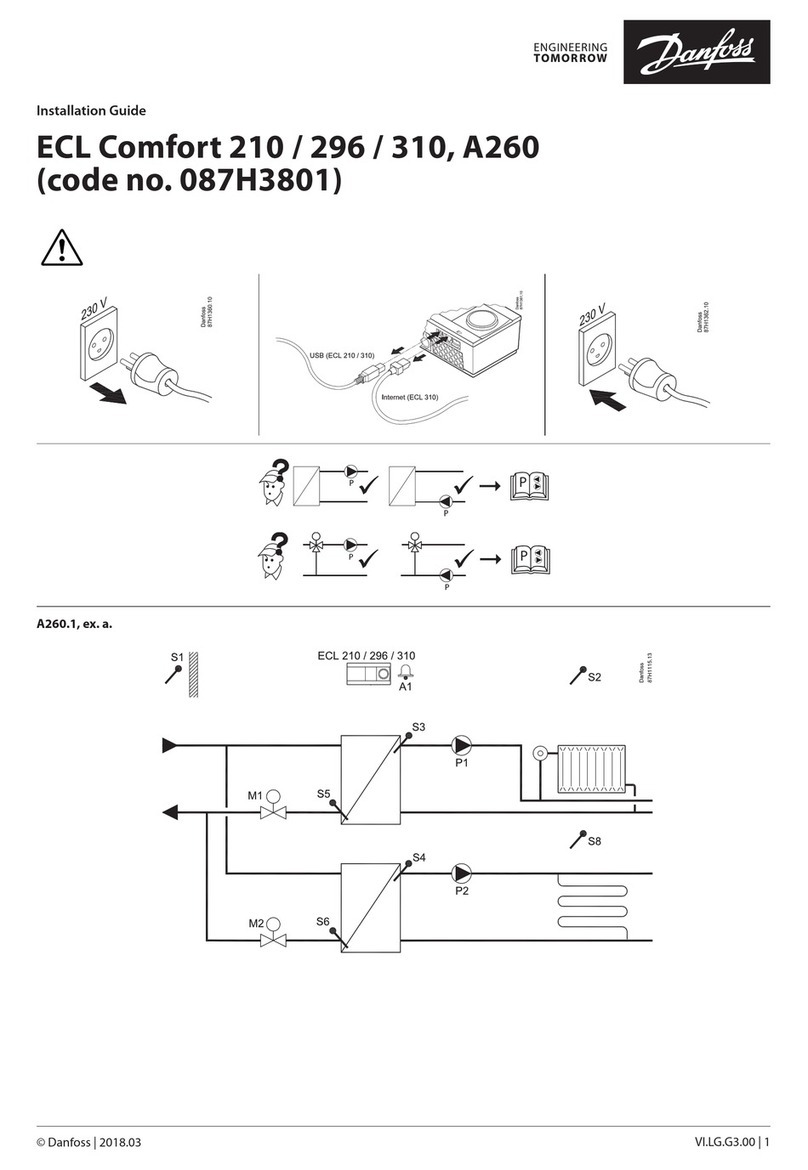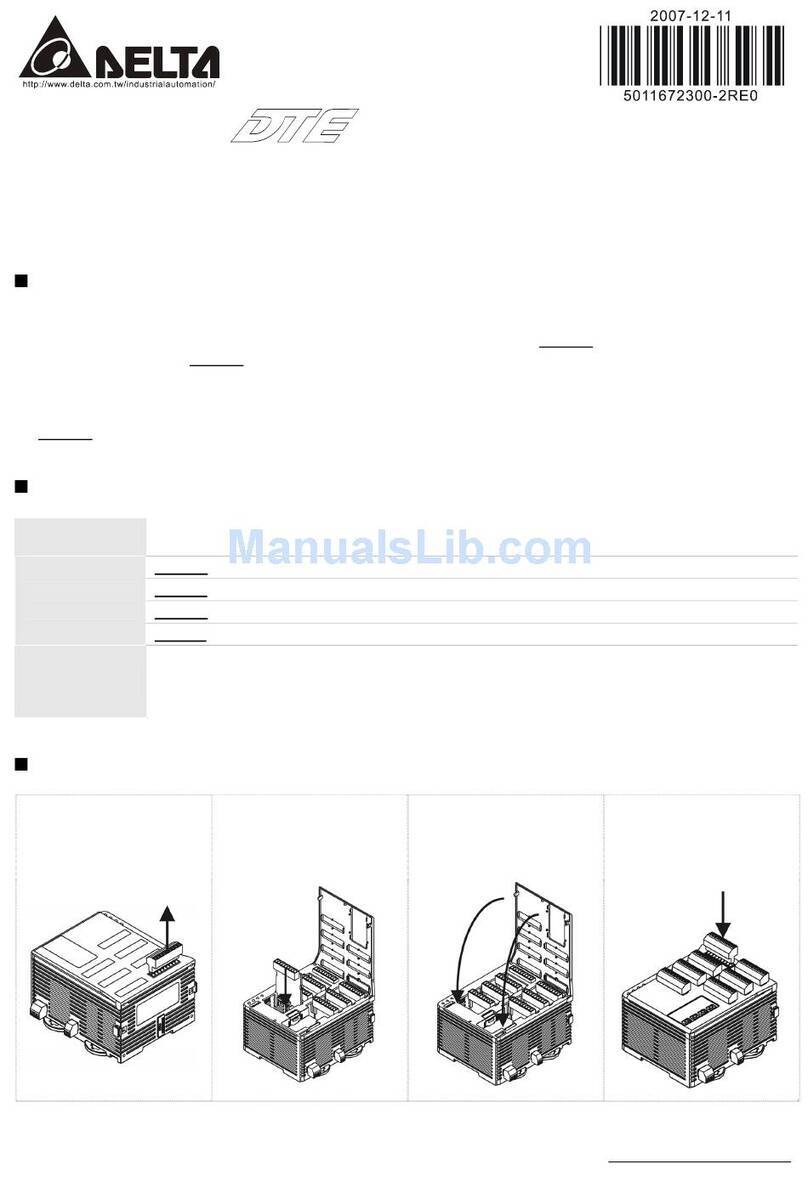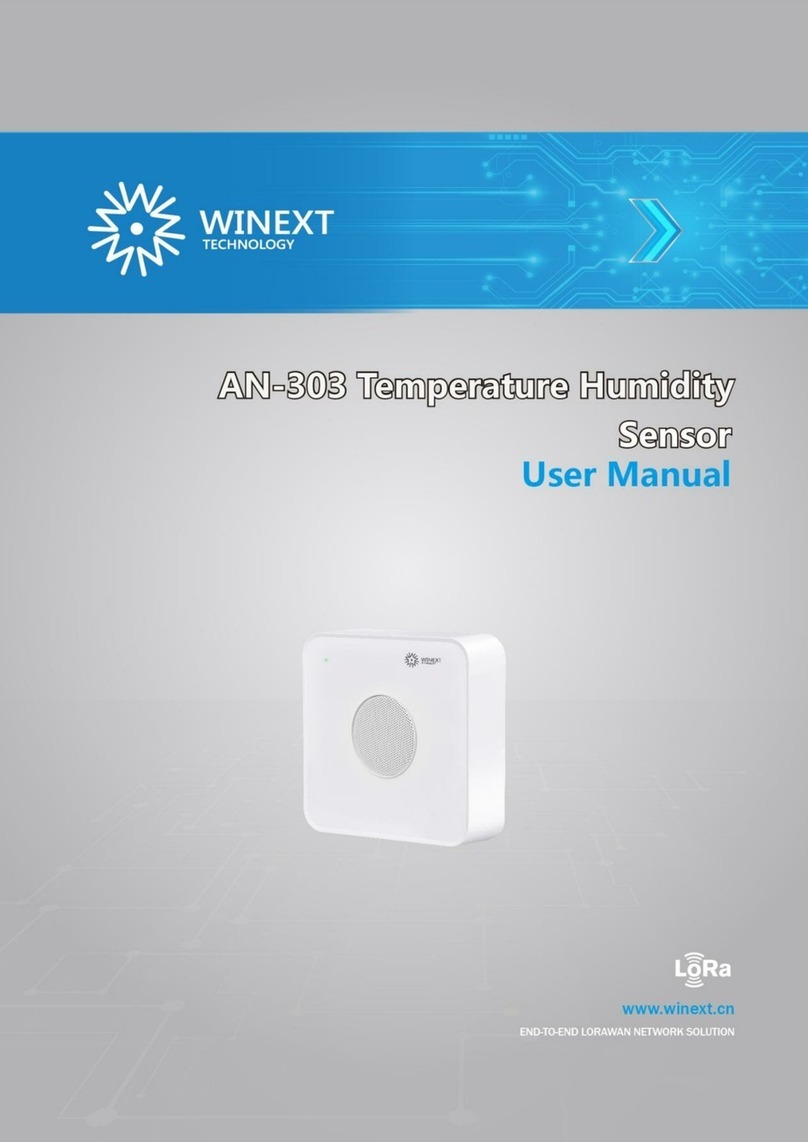AUTOMATION COMPONENTS, INC Version : 6.1
2305 Pleasant View Road I0000662
Middleton, Wisconsin 53562 Page 2 of 4
www.workaci.com (888) 967-5224
General Description
The mesh network DH2630 is a battery operated spread spectrum wireless duct mounted humidity (and
temperature) sensor.
The sensor is encapsulated in a 9.7” long plastic probe and is available with humidity only (DH2630A) and
humidity and temperature (DH2630B) models.
ACI Series 2000 wireless sensors utilize reliable Spread Spectrum Mesh Network Radio technology. They can
be installed easily in minutes eliminating hundreds of feet of wire and saving installation cost while reducing
installation labor risks.
The DH2630 sensor Data-Link LED confirms the data transmission was received by the receiver for fast and
reliable positioning of the sensor during installation. There is no need for special wireless installation equipment
or tool.
Together with the ACI Series 2000 receivers and controllers, the ACI wireless sensors can be used with any
LON, BacNet, MODbus, or DDC control system or panel.
The maximum radio transmission distance is dependent on the building type. The maximum open air
transmission distance is one mile. In a typical commercial building with steel I-Beam construction, concrete
floors with reinforcing rod, and metal stud walls, it can be expected that transmissions will penetrate vertically
through floors and horizontally through 200 to 300 feet of walls, furniture and air.
Installation
Wireless wall sensors should be installed within 200 to 300 feet of the receiver. RR2552 signal repeaters can be
installed as to increase transmission distance between sensors and receivers.
CAUTION
Observe battery polarity when installing battery.
To select the proper sensor location, first install and power the receiver. To activate the sensor insert the
battery observing the polarity. The mesh networked Series 2000 system does not require any additional wireless
equipment to determine the proper location of the sensors.
While the sensor is attempting to connect to the receiver the Data-Link LED will blink rapidly 8–10 times every
10 seconds. Once a connection has been established the Data-Link LED will blink once to indicate the data
transmission has been received successfully. The Data-Link LED will continue to blink once for every data
transmission. The data transmission rate is programmed into the sensor (normally 1 minute intervals). To
manually initiate a data transmission press the push button switch located by the negative terminal of the battery.
Locate the sensor at a straight section of the duct and away from heating, cooling or humidifying elements. Cut
a 1.25” diameter hole in the side of the duct. Mount the bracket to the duct, inserting the gasket between the
sensor and duct before attaching with screws. With the sensor protrusion pointing away –rotate the mounting
lever clockwise to the right. Insert the sensor head into the bracket aligning the protrusions on the mounting
plate with the grooves in the mounting bracket on the duct. Secure the sensor by rotating the lever 45° counter-
clockwise.
Since the sensor is located at the tip of the probe, consideration should be made to place the tip of the probe in
the middle of the airflow. Locate and record the sensor TXID numbers located on a label on the inside of the
enclosure cover.
The cover of the sensor can be removed by pushing the locking tap on the side of the housing. When the sensor
housing has been secured to the air duct, install the battery. Installing the battery will activate the sensor.
To install the cover, insert the case tabs into the case and snap the cover into the locking tab.
